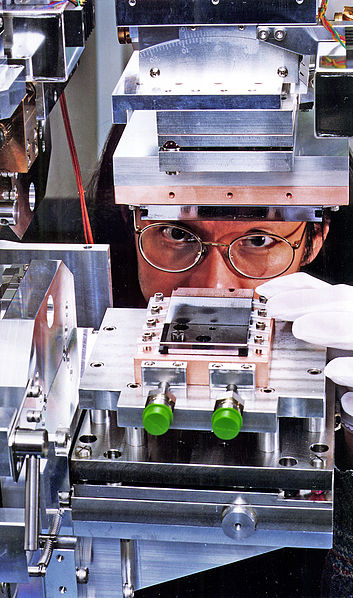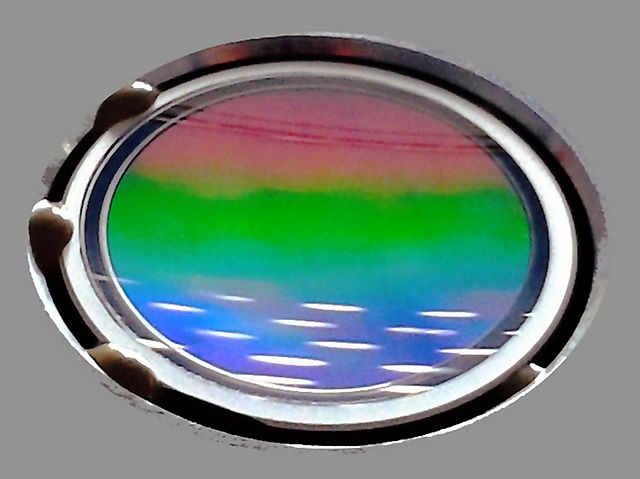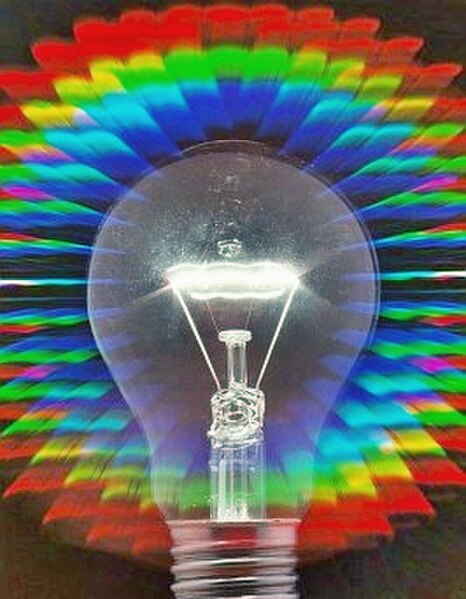A monochromator is an optical device that transmits a mechanically selectable narrow band of wavelengths of light or other radiation chosen from a wider range of wavelengths available at the input. The name is from the Greek roots mono-, "single", and chroma, "colour", and the Latin suffix -ator, denoting an agent.
Monochromator in an x-ray beamline at the Advanced Photon Source, Argonne National Laboratory.
Neutron monochromator for the ECHIDNA powder diffractometer at OPAL in Australia. It is made by slabs of [113] oriented Germanium crystals which are inclined towards each other in order to focus down the Bragg reflected beam.
A combined reflecting-focusing diffraction grating
A Fastie–Ebert monochromator. This is similar to the Czerny–Turner but uses a common collimator/refocusing mirror.
In optics, a diffraction grating is an optical grating with a periodic structure that diffracts light, or another type of electromagnetic radiation, into several beams traveling in different directions. The emerging coloration is a form of structural coloration. The directions or diffraction angles of these beams depend on the wave (light) incident angle to the diffraction grating, the spacing or periodic distance between adjacent diffracting elements on the grating, and the wavelength of the incident light. The grating acts as a dispersive element. Because of this, diffraction gratings are commonly used in monochromators and spectrometers, but other applications are also possible such as optical encoders for high-precision motion control and wavefront measurement.
A very large reflecting diffraction grating
An incandescent light bulb viewed through a diffractive effects filter.
A blazed diffraction grating reflecting only the green portion of the spectrum from a room's fluorescent lighting
A helical fluorescent lamp photographed in a blazed reflection-diffraction grating, showing the various spectral lines produced by the lamp.


![Neutron monochromator for the ECHIDNA powder diffractometer at OPAL in Australia. It is made by slabs of [113] oriented Germanium crystals which are i](https://upload.wikimedia.org/wikipedia/commons/thumb/d/d9/NeutronMonochromatorBNL.jpg/253px-NeutronMonochromatorBNL.jpg)





